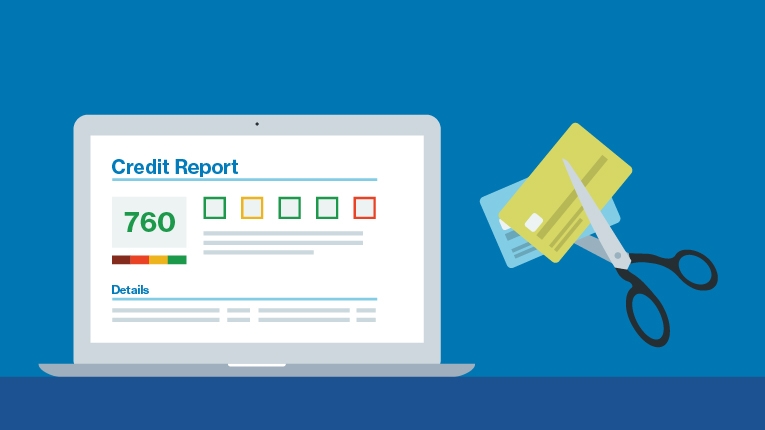Compound interest vs. simple interest: differences & how to calculate

Whether you’re saving or borrowing money, you should understand the difference between simple interest and compound interest. Why? Because these rates are commonly used for loans, credit cards, and savings accounts—but they’re calculated differently. In other words, it impacts how much you’re paying (or earning).
What is simple interest?
Simple interest is the interest calculated on the principal amount of a loan.
For example, if you open a $10,000 certificate of deposit (CD) with a 3% interest rate and simple interest, the CD will accrue $300 of interest every year ($10,000 x 3% = $300). If it has a three-year term, you’ll earn $900 of interest overall.
With a loan, the simple interest can determine how much you’ll pay. However, the total amount can be a little difficult to calculate because your principal balance will decrease as you repay the loan.
How to calculate simple interest
Simple interest depends on the principal balance, interest rate, and time period. Here is the simple interest formula: I = P*r*t
I is the total interest amount
P is the principal balance
r is the interest rate
t is the time period
You want to use the same timeframe for the inputs to ensure you get the correct results. For example, if interest is charged daily, use the daily interest rate for (r) and a single day for (t) to determine how much interest accrues each day. If you want to figure out how much interest you’ll pay each year, use the annual interest rate and one year as the time. You can often review a loan agreement or statement to find the loan’s interest rate.
It may be shown as the annual rate, but the loan agreement could explain how a daily rate is determined. Often, the annual interest rate will be divided by either 360 or 365 to determine the daily interest rate.
What is compound interest?
Compound interest applies the interest rate to both the principal balance and accrued interest. In other words, it charges interest on interest. With a loan, compound interest can lead to paying more interest over time. For example, a credit card may use daily compounding interest if you’re carrying a balance.
Each day, interest is calculated based on your current total owed and your card’s daily interest rate and then. added to your balance. On the following day, interest is calculated again on your new balance, and the cycle continues. With savings, compound interest can be a good tool to build wealth over time. Because you can earn interest on your interest, your account may grow more quickly.
Checking and savings accounts often show you the account’s annual percentage yield (APY), which includes compounding interest in the calculation.
How to calculate compound interest
Calculating compound interest can be tricky because there’s an additional variable. That is the frequency of compounding. We’ll use an example to explain this concept below. This is the compound interest formula: A = P (1 + r/n)nt
A is the total amount
P is the principal balance
r is the annual interest rate
n is how often interest compounds per year
t the number of years
If you only want to find the total accumulated interest, you could use:
I = P (1 + r/n)nt - P
For example, let’s say you take out the same $10,000 CD with a 3% interest rate and three-year term. But this time, the interest compounds monthly.
A = 10,000 (1+.03/12)(12*3) = $10,940.51
You earned $940.51 in interest—an additional $40.51 compared to the simple interest CD—because you earned interest on your interest.
The frequency of compounding can also be important, as you’d earn more if interest compounded daily, but less if it compounded annually. You can find out how frequently interest is compounded for your account by reviewing your terms.
Simple interest vs. compound interest loans
Compound interest is often best when you’re saving money because you’ll earn interest on interest. If you’re taking out a loan, a simple interest loan may be the better option since it could lead to less costs overall.
However, even with a simple interest loan, there are situations when your outstanding interest could be “capitalized,” or added to the principal. For example, this could happen when certain federal student loans leave deferment or forbearance. The interest rate would then apply to the new, larger principal balance.
Remember, it’s important to look beyond the interest methods and consider the rest of the loan terms, such as the fees and repayment terms. If you have a tight budget, it might make sense to go with an option that has a lower monthly payment, even if it results in paying more interest overall.
How simple interest personal loans could save you money
Assuming all other loan terms are the same, a loan that uses simple interest could have lower monthly payments and cost you less overall than a loan using compound interest.
You may be able to save additional money by making extra payments. By paying down part of your principal early, you can decrease how much interest accrues on your loan, With a fully amortized loan, your monthly payment amount might not change because you have a fixed repayment schedule—but making early payments could lead to paying off the loan early or having a lower final payment.
Saving money by making extra payments can work with both simple and compound-interest loans, but it’s not true of loans that use precomputed interest. With precomputed interest, the lender calculates and adds the interest to your loan.
The bottom line
Loans and deposit accounts may use simple or compound interest to determine how interest accumulates. When an account uses simple interest, the interest rate only applies to the principal balance. But compound interest gets applied to the principal balance and accumulated interest.
Over time, an account that uses compound interest can lead to paying (or earning) more interest than one that uses simple interest. However, interest is only one factor when opening a new account. You may also want to review the accounts’ other features, terms, and fees to determine which is best.
Compound interest vs simple interest FAQ
1. Is it better to open a compound interest or simple interest account?
You should review the terms of any saving or borrowing product carefully to make sure you’re getting the best deal. That being said, the cost of borrowing may be lower with a simple interest rate loan than with a loan that uses compound interest. Conversely, if you’re saving money, a checking or savings account with compound interest may grow more quickly than one with simple interest. Keep in mind, there are other factors to consider beyond interest when opening a new account.
2. How do simple-interest personal loans compare to compound-interest loans?
Simple-interest loans may accrue less interest over time than loans using compound interest. With simple interest loans, you don’t pay interest on top of the interest that’s already accrued. However, there are unique situations when interest is capitalized and added to the loan’s principal—like when certain federal student loans leave deferment or forbearance.
3. Can simple interest be used for car loans?
Auto loan lenders may offer you an auto loan with simple interest, but that depends on the lender. Review the terms of your loan offers to see how interest would be calculated on your car loan.
4. Do banks offer simple interest loans?
You can find simple interest loans from both banks and online lenders. If you’re not sure what the lender uses, ask a representative or review the loan offer.
5. How does LendingClub Bank calculate personal loan interest?
LendingClub Bank offers unsecured personal loans that are fully amortized and have fixed interest rates. We charge simple interest, and there’s no prepayment penalty for borrowers who want to save money by paying off their loans early.




